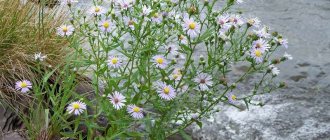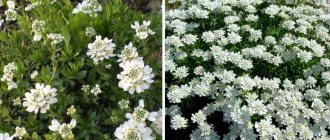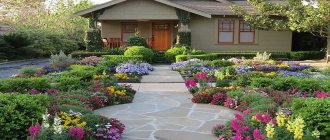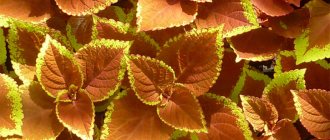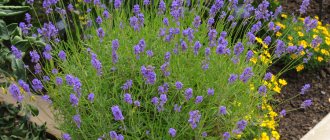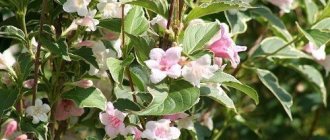Probably many people have heard about jasmine in their lives. This flower mainly decorates the windowsills of apartments and houses. But this shrub loves to grow in the wild. In particular, many gardeners grow it on their plots. It happens that some people confuse jasmine and mock orange. Plant care is the same, but there are differences in appearance and origin. The first one has much larger and more fragrant flowers. So, let's look at how to plant jasmine in the spring, and also learn all the intricacies of caring for it.
Briefly about the main thing
First, let's take a closer look at information about jasmine. This shrub came to us from Mediterranean countries. It is grown for decoration and is also used for medicinal purposes. A bush grows with a large branched crown. It blooms very beautifully with white or yellow flowers. They have a sharp but pleasant and sweet smell. Today there are many subspecies of this plant, so the shape and size of the buds depend on this. The plant is easy to care for and adapts to any weather conditions. Easily lives in the shade or sun, in the south or north. The plant can withstand severe drought and heavy rain. Bees love this flowering shrub. They collect pollen and nectar from the buds. Jasmine has its own unique characteristics that you should also know about.
Rules of agricultural technology
Growing and caring for them is not a problem, but you still need to adhere to the basic rules.
Watering
An abundance of moisture is one of the main tasks when cultivating jasmine. Without periodic watering, many buds will not form, and flowering will be weak and short-lived. The plant signals about water deficiency by drooping leaves. Immediately after this is discovered, the bush should be watered well, and the turgor will be restored in a couple of hours, but the buds may then wither. Also, the level of moisture must be monitored during flowering, and cracks in the soil should not be allowed to appear.
Feeding
Fertilizing during cultivation is especially important for semi-double and double forms, although simple types will look more decorative after periodic fertilization.
Jasmine, which does not experience a deficiency of minerals, tolerates winter frosts better, is less damaged by diseases and withstands periods of weather disasters.
Fertilize in several stages:
- In the spring, after the start of active growth, use a solution of manure and water (1:10). It is important to avoid getting the solution on the branches.
- At the end of May - 1 tbsp. l. urea, 1 tbsp. l. potassium sulfate, 2 tbsp. l. superphosphate per bucket of water.
- The first half of autumn is to sprinkle the tree trunk with ash to get rid of parasites overwintering in the soil and for abundant bud formation next year.
Such care will provide the mock orange with everything necessary for growth and make the soil nutritious.
Loosening
To reduce the need for watering and improve air exchange, you should loosen its top layer after watering and slightly drying out the soil. In parallel with this procedure, weeds are removed. If, after planting, mulch is used with peat, conifer bark or pine needles, the need for loosening disappears.
Crown formation and pruning
Fast-growing varieties may lose their shape within 3-4 years, with one side looking lush and the other more bare. To prevent this, in addition to knowledge about planting, caring for and propagating shrubs, you need to master the principles of pruning jasmine.
For complete molding, 3 stages are carried out:
- Sanitary pruning in spring. It is carried out before the start of active growth to remove frostbitten and dried shoots.
- Autumn pruning. Allows you to remove wilted inflorescences, dry or disease-affected areas. As a result, by the next season, new buds are formed, and branching becomes active.
- Anti-aging pruning. Allows you to keep the crown thick. Rejuvenation is necessary every couple of years. At the same time, 1/3 of the old shoots are removed, all branches directed into the bush are cut off.
On thick sections, it is better to treat with garden varnish for quick healing. The pruning tool must be disinfected.
By applying the above rules for planting, propagation and care, you can get excellent jasmine bushes, which with their aroma will delight the owner and bring benefits for many years.
What is special about jasmine?
As soon as the fresh buds open, they produce a large amount of essential oil. It has a beneficial effect on a person's libido. The main parts of the essential oil, such as benzyl acetate, benzene alcohol, jasmone and other ingredients, have one main feature - they restore sexual function in the human body. You can prepare a decoction from jasmine flowers that will help you restore digestive function. It can also easily remove toxins and improve blood circulation. This is, at first glance, an ordinary flowering bush, but it hides many useful functions. Regardless of which varieties of jasmine decorate your garden, they all have healing properties. By planting such a shrub at your dacha, you will get a unique decoration that will guard your health. It’s worth figuring out how to plant jasmine in the spring and why it should be done at this time of year. But first, it’s worth considering the available varieties of this magnificent flowering shrub.
Jasmine varieties
You can grow the following types of shrubs on your site:
- Small-leaved. The bush grows small. Its height reaches only 1 m. The branches are large, curved, with double leaves. The flowers have a pronounced strawberry aroma.
- Common coronary. This is a large species of shrub. Its height can reach three meters. The large white flowers have a sweet aroma. It will delight you with its beauty from the beginning of June. The leaves are green with yellow-golden colors.
- Fluffy. Ideal for large plots or city parks. Among all the representatives of jasmine, this is the tallest. Its length can reach 4 meters. It has no smell at all. This variety is also the latest. It can bloom for a month.
- Ermine mantle. This bush does not reach one meter in height. Flowers are located along the entire length of the branches and can delight you for two long months.
The varieties listed are considered the most popular. They are in great demand. The plant can be chosen to suit every taste. Everything will depend on your preferences.
Proper planting of jasmine
In order for the shrub to grow well, you need to plant it correctly and then provide constant care. All varieties of jasmine are planted the same way. Let's look at what is necessary for the favorable growth of a shrub.
- You need to choose the right place. Since jasmine is an unpretentious plant, it will take root anywhere. The main thing is that there are no strong drafts. They prevent the bush from growing in the first 2 years of its life. It is better if you choose a sunny place for it, then the jasmine will smell fragrant and bloom to your delight.
- The plant will look good in a flower bed next to blue and purple flowers, such as delphiniums or lavender.
- Jasmine gets along well with neighbors such as hydrangea or spirea.
- It can only be planted in autumn or spring.
We are interested in planting jasmine in the spring. Let's look at this question more specifically.
Disease and pest control
Jasmine needs to be protected from thrips, aphids, spider mites, weevils, mealybugs and soft scale insects. As soon as traces of these pests appear, you need to spray the bush with garden insecticides.
In some cases, folk remedies (ash, soap solution, etc.) help.
This article will help you choose the right shrubs for your hedge.
Read about fast-growing trees and their use in landscape design here.
Find out about the most popular lawns and their planting here.
What kind of soil should it be?
As we said earlier, jasmine is an unpretentious plant, so it does not have any special preferences in the soil. But it is better if the land is fertile. Jasmine roots do not tolerate excessive moisture. It is better to plant the plant at higher elevations. Before planting, it is worth providing drainage, which will consist of sand and small stones. To ensure that jasmine planting in the spring is successful, you should add about 50 grams of nitrophoska to the hole. As soon as the shrub is planted, the soil should be compacted well and watered. Now you should carry out constant fertilization of jasmine.
What to consider when growing
Jasmine is not a capricious shrub, but it has certain growing characteristics that must be taken into account when planting the plant.
Required soil composition
Almost any soil that has a sufficient supply of nutrients is suitable for planting jasmine. The root system of the shrub does not tolerate waterlogging, so the groundwater level should not come too close to the surface. If there is not enough nutrition in the soil, this will affect the beauty of flowering.
The optimal composition of nutrient soil for ornamental shrubs is considered to be a mixture of humus and river sand (1 part each), as well as turf soil (2 parts).
Requirements for illumination of the place
If you have to choose where to plant jasmine on your site, then preference should be given to a well-lit place. The shrub also feels good in partial shade, but in such conditions it is impossible to achieve lush flowering.
Suitable and unsuitable neighbors
It is better to plant jasmine next to flowers of dark blue or purple color. Good neighbors for shrubs will be:
Jasmine should not be planted near apple and pear trees, as these fruit trees suffer greatly from such proximity.
Fertilizer rules
We've figured out how to plant jasmine in the spring. Now let's pay attention to feeding the plant. Here are some tips:
Tip 1. The first fertilizer should be applied only a year after planting the plant in open ground.
Tip 2. Jasmine should receive mineral fertilizers. One of these is prepared according to the following recipe: in 10 liters of water you need to mix 50 grams of superphosphate, 25 grams of urea, 25 grams of potassium sulfide. The fertilizer is thoroughly mixed and the bush is watered with it.
Tip 3. Jasmine should also receive organic fertilizers in the right quantity. These include manure or humus. One rule should be followed here: to prevent the roots of the plant from burning, the manure is diluted with water in a ratio of 1:15.
By following these simple tips, you will get an amazingly beautiful plant in your garden that will delight you with its pleasant aroma. Now we know not only how to plant jasmine in the spring, but also how to fertilize it correctly. But caring for the plant does not end there.
What to do if jasmine does not bloom on your property or at home
Indoor jasmine - how to care
The absence of buds in a plant over 3 years old is a signal to the gardener that he is not caring for it correctly. To restore the condition of jasmine, it is necessary to carry out a number of measures to eliminate negative factors:
- normalize watering - it should be frequent, but without overwatering;
- change, if necessary, the location - diffused light or partial shade is needed;
- change fertilizers. If only nitrogen substances were introduced, it is necessary to alternately use mineral and organic feeds;
- normalize cropping. It should be regular, held in autumn and spring.
If the jasmine is on the street and all measures to resuscitate it have been in vain, it needs to be transplanted. Perhaps it's all about the soil being poor in nutrients and minerals.
Jasmine will thank you for comfort with delicate, beautiful petals.
Rules for crown formation in shrubs
Every owner of this wonderful plant should know how to prune jasmine in spring. In order for the bush to have a beautiful and well-groomed appearance, you need to form the correct crown.
It is worth familiarizing yourself with some basic rules for pruning:
- It is worth pruning in the spring, when the plant is in the growing season. Long branches are removed completely, short branches - half.
- To ensure that the branches are always filled with flowers, it is worth carrying out anti-aging pruning. All unnecessary and empty branches are removed.
- In an adult shrub, the main trunks should be shortened to 50 cm, the rest completely.
- Every year, be sure to sanitize the bush, removing excess and diseased branches.
Having figured out how to prune jasmine in the spring, it’s worth learning how to prepare it for winter.
Trimming
Systematic watering and regular care is only one step towards creating a truly lush and fragrant jasmine leaf . Another very important point is pruning your planting. Moreover, this must be done regularly and competently.
Pruning jasmine in spring
Here are 4 rules for properly pruning garden jasmine:
1In spring, the jasmine bush is in a vegetative state. It is at this time that pruning needs to be done.
2The branches of the bush that you find significantly longer than others must be cut off completely at the root; branches of medium length should be cut exactly in half.
3Pruning jasmine includes the concept of “anti-aging pruning”. This means that you use special scissors to remove absolutely all empty branches, i.e. those on which there is no flowering.
In order for jasmine to delight you with its lush inflorescences and unique aroma every year, you need to inspect your planting every time, free it from dry branches, weeds and pests.
Here are some more tips for quality shrub pruning:
Wintering
Indoor jasmine needs the same care as outdoor jasmine. However, the latter must be constantly, every year, prepared for winter. If this is not done, the plant may die from low temperatures.
To prevent this from happening, you should follow some recommendations:
- Adult seedlings tolerate the cold season better and do not require additional preparation.
- The same cannot be said about young bushes. After the jasmine has bloomed, it is covered with special material or straw. This way the plant will survive the harsh winter well.
- To preserve the roots of jasmine, before wintering the soil near the plant trunk is dug up with the addition of compost.
If after a long winter you decide that your jasmine needs to grow somewhere else, then you can arrange for it to move.
Preparing for winter
When preparing jasmine or mock orange for wintering, special attention is paid to fertilizing. These can be organic or mineral fertilizers in liquid form. How well the feeding is done, the shrub will comfortably overwinter and set buds for the next flowering.
Preference is given to potassium-phosphorus mineral mixtures. You can buy ready-made ones or make your own: superphosphate and potassium sulfate in equal quantities. After deep watering, fertilizer is applied to the dug trench, then the trench is closed, and the soil is mulched with sawdust, straw, and bark.
After the movement of sap in the tree has stopped, you need to trim the branches - thin out the shoots so that there is no thickening inside the crown.
Reproduction
Jasmine is a plant that can be grown in your own area. This can be done in several ways:
- Seeds. They can be planted directly in open ground or as seedlings.
- By cuttings. They are harvested in June. Then they are planted in a greenhouse or directly into open ground.
- By shoots. In spring, shoots begin to prepare. They are cut from the main trunk. The strongest escape is chosen. He is allowed to overwinter, and next year he is planted in the place allocated for him.
- Dividing the root system. This method is used extremely rarely. This method is used only when they want to quickly grow another jasmine bush. This method is appropriate only in the autumn.
In the article we looked at how to plant jasmine in the spring. Use this information as a reference and you will be able to grow a jasmine garden. The main thing is not to confuse absolutely two different plants - home jasmine and garden jasmine. They are absolutely different from each other and require a different approach. Remember, jasmine is not only beautiful, but also useful. Want to improve your health? Then you simply must have this miracle plant on your site.
How to plant correctly
Jasmine is an unpretentious plant, but in order for it to take root well, you need to know the main principles of planting.
Time
Most often it is recommended to plant shrubs in May or September. For the southern regions, the timing is somewhat extended: you can start in April, and the latest time to plant young plants is in the first half of October, provided the weather is warm.
Experienced gardeners pay attention to the fact that spring plantings often take root successfully, since after them the shrub gets sick less and has time to form a developed root system, which will help to survive the winter even in extreme cold.
The ideal option would be to plant in cloudy weather or in the evening so that the bush does not wilt in the first hours after replanting.
Landing location
When choosing a site for planting, you should remember that jasmine will live in this place for at least 10 years.
For good growth, the shrub is suitable for both open sun and partial shade, but for abundant and long flowering this plant needs a lot of sun, so you should not plant mock orange on the north side of fences or walls. In the deep shade, its lower part will become bare and will look leafless, and the branches will stretch strongly, and a normal crown will not form.
The place should be without high groundwater and stagnant rainwater, because excess moisture leads to root rot. For the same reason, jasmine should not be planted on heavy clay.
Soil preparation
The pit for planting is prepared in a couple of days. Dig a cylindrical depression 0.6 - 0.7 m deep and a little more than half a meter in diameter. The bottom is thoroughly loosened and a drainage layer of broken tiles, sand or crushed stone 15 cm thick is laid.
The pit is prepared several days in advance so that it warms up properly before planting. Preliminarily make up fertile soil. To do this, take humus, black soil and ash in a ratio of 10:1:1. You can add 1 part sand.
If several bushes are planted at the same time, you need to leave an interval of 0.5 m between them (for a green hedge) or 1.5 m (for a group of large varieties).
Landing
The prepared soil mixture is poured onto the bottom of the hole. The roots of the seedling are carefully examined, using sharp pruning shears to remove parts affected by mold or rot. The cut areas must be sprinkled with ash.
The roots are carefully distributed along the bottom of the planting hole, slightly pressing them into the ground. The seedling must be placed so that its root collar is level with the ground or sinks into the ground no more than 3 cm. Deep placement can lead to the development of rot. The hole is filled with soil, lightly compacted and watered abundantly. The water temperature should not be lower than the air temperature, or better – 5°C higher. You need to pour at least 3 buckets of water under each bush.
After a week, all excess branches that are directed inside the bush are cut off.
Even novice gardeners can care for mock orange. To grow a healthy large bush, you don’t need to have any special skills, just follow the basic care recommendations.
Watering
Jasmine is a very moisture-loving plant. In order for it to be densely covered with flowers in the summer months, it needs a sufficient amount of watering. The lack of moisture can be easily guessed by the state of the leaves: they lose turgor and look wilted. If this happens, you need to water the mock orange abundantly, and it will return to its normal state, but if it dries out, many buds or flowers may dry out and fall off.

